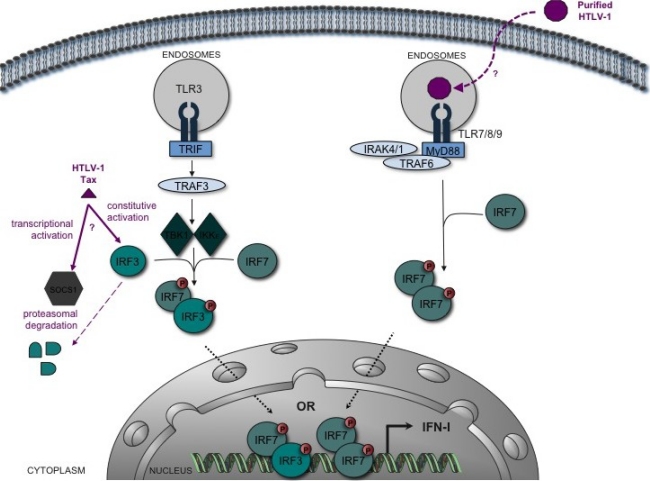Figure 1.
Interplay between HTLV-1 and the type-I interferon (IFN-I) induction pathway. A simplified schematic of the TLR-induced IFN-I induction pathway is shown. Recognition of PAMPs by TLR3 induces the recruitment of the adaptor molecule TRIF. TRIF activates via TRAF3 the kinases TBK1 and IKKɛ that phosphorylate IFR3 and IRF7 transcription factors. IRF3/7 heterodimers activate transcription of IFN-I (especially IFN-β). This initial transcription and synthesis wave is followed by a second wave of IFN-α resulting from an amplification loop that involves IRF7. TLR7, 8 and 9, specifically expressed in pDCs, activate IRF7, which stimulates synthesis of IFN-α via MyD88, IRAK1/4 and TRAF6. In vitro, sensing of HTLV-1 induces TLR7-dependent IFN-α secretion by pDCs [59]. However, pDCs isolated from HTLV-1-infected individuals show an altered ability to produce IFN-α in response to viral stimulation (e.g., by HSV-1) [46]. In vitro, HTLV-1 Tax targets IRF3 function, but the data are conflicting: while some indicate an inhibitory effect of Tax mediated by SOCS1-induced IRF3 degradation [67], others show constitutive activation of IRF3 by Tax [68].

